Returning to the Post COVID-19 Office
Welcome Back to your Post-Corona Office. You probably won’t recognize it
Landlords are overhauling their buildings to prioritize sanitary features
Thermal cameras, bacteria-fighting HVAC systems and contactless coffee machines. Welcome back to the office – you may not recognize it.
As New Yorkers gear up to go back to work, landlords are scrambling to cater to a totally different set of priorities. Over the past few years, office spaces have been designed to maximize social interaction. Now, however, minimizing risk of spreading disease is the first order of business.
Marx Realty, which has been planning a $24 million overhaul of 545 Madison Avenue, tweaked plans to include features such as antimicrobial materials. The firm, which owns the fee interest in the property, recently took back the operating lease from Joseph Sitt’s Thor Equities.
The design for the lobby and the entryway along with the retail facades will be swapped to warm brushed brass and bronze with curved features, walnut panels and golden lighting. And, of course, a touchless Purell dispenser.
“What’s important about this Covid world is that people still feel comfortable and it feels warm and inviting when they enter the building, especially after being on the trains and buses and walking in their masks,” said Craig Deitelzweig, CEO of Marx Realty. “Everyone wants a hospitality feel but now they will work together, six feet apart.”
Marx has also talked to tenants about using building entry protocols such as thermal screening. Pre-authorized visitors would be notified that they will be subject to such screening.
Some security experts have questioned the efficacy of such technology because some cameras don’t work as well as others.
“I’m not so much worried about getting pulled out of line and checked for a fever that I don’t have,” Lewis Burns of Shen Milsom & Wilke, which provides security plans for large organizations, wrote in a recent post on the company blog. “However, I am genuinely concerned about the businesses and governments using technology that isn’t precise, creating a false sense of security.”
At 545 Madison, touchpoints that could transfer the virus will be eliminated where possible. For instance, a doorman will open the doors while personal phones will control elevators through Marx’s proprietary software. Vornado Realty Trust similarly has its own phone app for turnstiles, the real estate investment trust’s Vice Chairman David Greenbaum said on its Tuesday conference call.
OTJ Architects is designing the pre-built suites on the third and fourteenth floors of 545 Madison with rents at $87 and $115 per foot respectively, which will open directly from the elevator onto the full floor – thus avoiding another door, according to Deitelzweig. Tara Stacom at Cushman & Wakefield is leading leasing at the building.
“We think tenants will be more inclined to move or add space as they won’t want employees to be so densely populated,” said Deitelzweig. “They will begin rethinking their space, so it’s an opportune time to do [these pre-builts].”
Lobby couches and chairs are being covered in cozy velvety cloth – but is designed to be easily cleaned as will the coverings for the furniture on the club floor.
“You may see companies begin to use more furniture that was intended for healthcare spaces because those products were designed to be more easily and reliably sanitized,” said James Keenoy, president of the Westfield, New Jersey-based furniture procurement specialist Farrell Flynne.
While some owners and tenants will change interior layouts to accommodate social distancing, others will incorporate more automated technology – some of which Keenoy warns can be cumbersome and expensive.
Marx Realty is researching adding ultraviolet light inside HVAC systems. Air-handling devices such as Atmos Air are being deployed in many buildings, the company said, as its bipolar ionization system attacks bacteria and viruses in the office air, rather than waiting for them to be pulled through filters. Vornado CEO Steve Roth said the company is also exploring different air handling systems, including ionization technology because they are “not costly.”
Keenoy said owners are also looking for ways to rejigger collaborative spaces into ones more appropriate for social distancing. Staffers may suddenly want cubicles with tall panels rather than pre-Covid open benches or ask for receptionist-like desks that put them in the middle of a wide circle.
“I drew a six-foot circle around every person and calculated how many people could fit in a space to see if a company would have to take more space,” said Dan Montroy of Montroy DeMarco Architecture.
What he found was that in a space he had already designed for 30 people, about 16 to 20 people could work in such an office at one time but it doesn’t mean they will need to lease larger digs.
“In a lot of cases, it’s a net wash for the space,” he explains, because some employees will still opt to work from home or stagger hours.
“Will you ask them to get on mass transit to come to a conference room?” Montroy wonders. “Does it make any sense to do that and what can we physically do to plan for that?”
Ways to deter virus contact in offices will also be tackled by scientists at The Well Living Lab, a lab partnership between Delos and the Mayo Clinic that is adjacent to the latter’s Rochester, Minnesota campus.
Here, sensors will be able to track and evaluate designs geared towards mitigating and repelling the transmission of the virus in office settings.
Both Cushman & Wakefield and Hines will contribute workspace and workforce strategies to the effort and later test these Well Living Lab concepts in their own offices and at the Delos headquarters in New York.
The researchers will be looking at ways to reduce air particulates, decontaminate surfaces, study how people interact and accomplish physical distancing, and also measure employee performance and satisfaction with the setups.
Source: The Real Deal / Photography: Peter Dressel/Wilk Marketing Communications

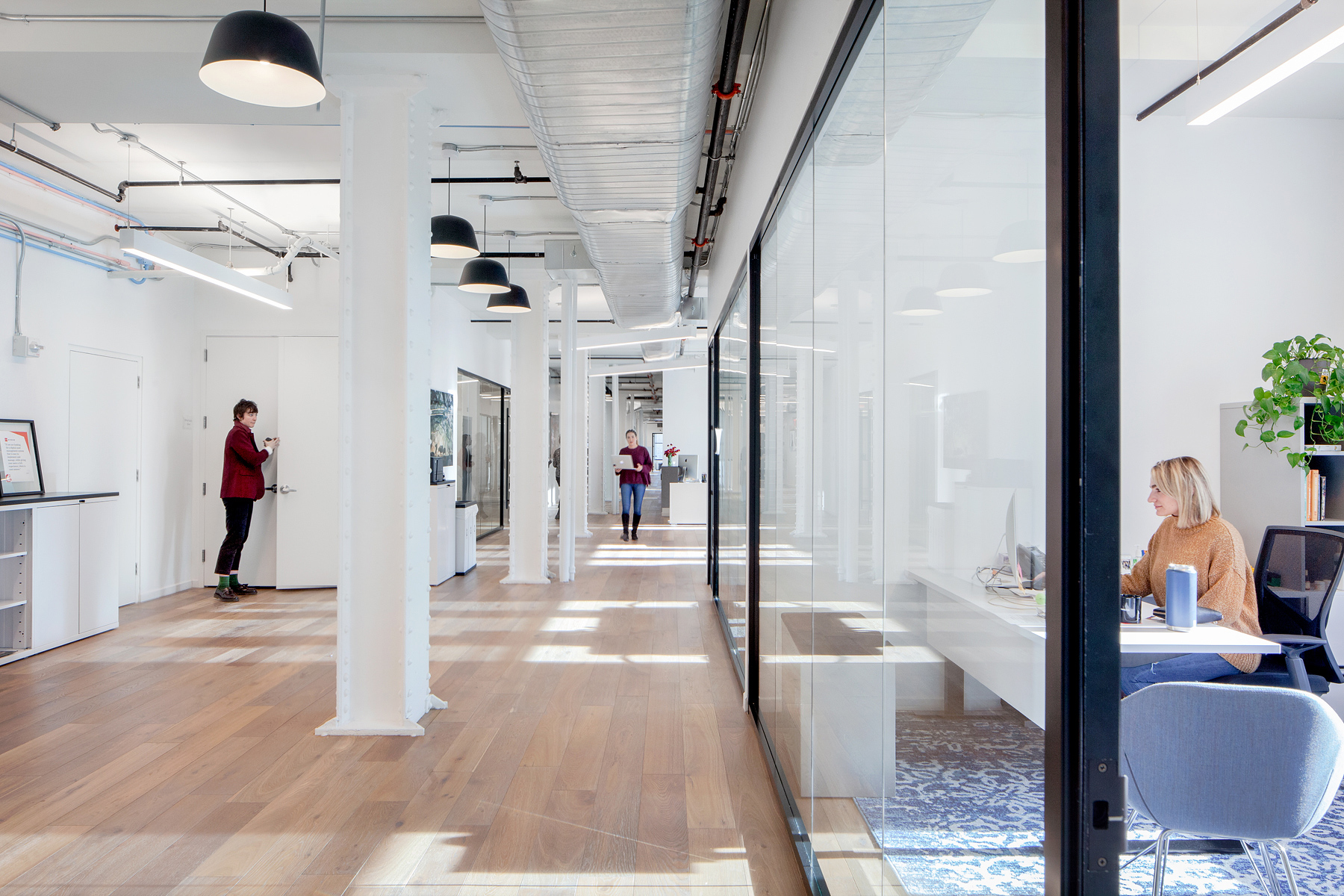
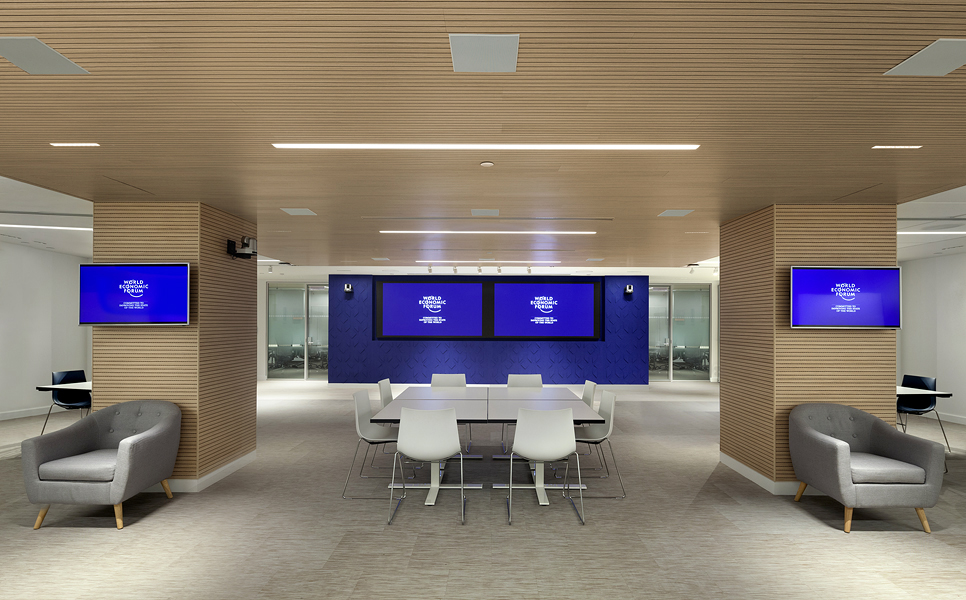
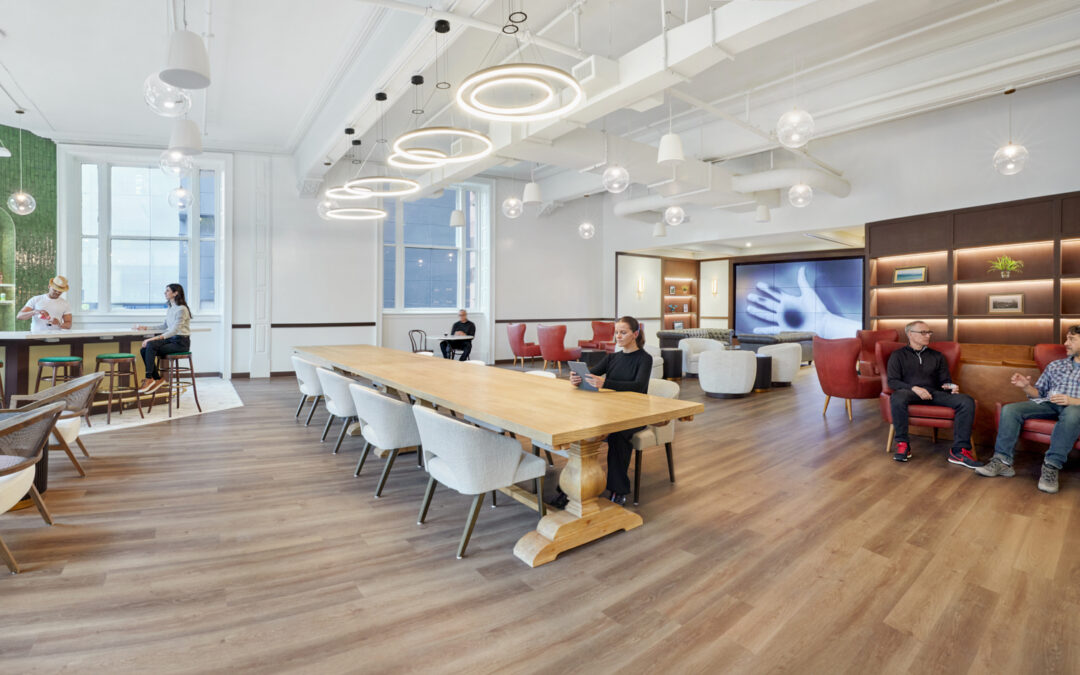
MDA is One of the Nation’s Largest Workplace Interior Architecture Firms
Montroy DeMarco Architecture LLP is one of the Nation's Largest Workplace Interior and Interior Fitout Architecture and Architecture Engineering (AE) Firms! Check out Building Design+Construction Magazine's Annual 2024 Giants 400 Report....
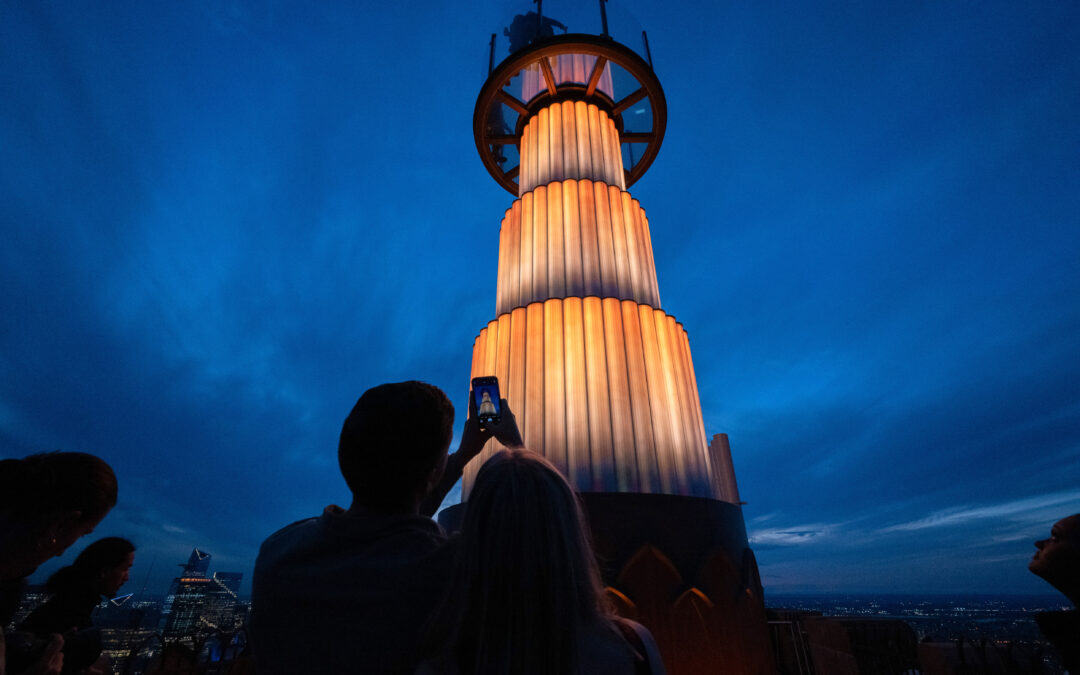
Top of the Rock Opens 900 Ft. High Skylift Attraction
Skylift at Top of the Rock, a new attraction atop 30 Rock, elevates visitors nearly 900 feet in the air above street level for a spectacular, entirely unobstructed, 360-degree view of New York City. The design team for the Skylift included owner Tishman Speyer...
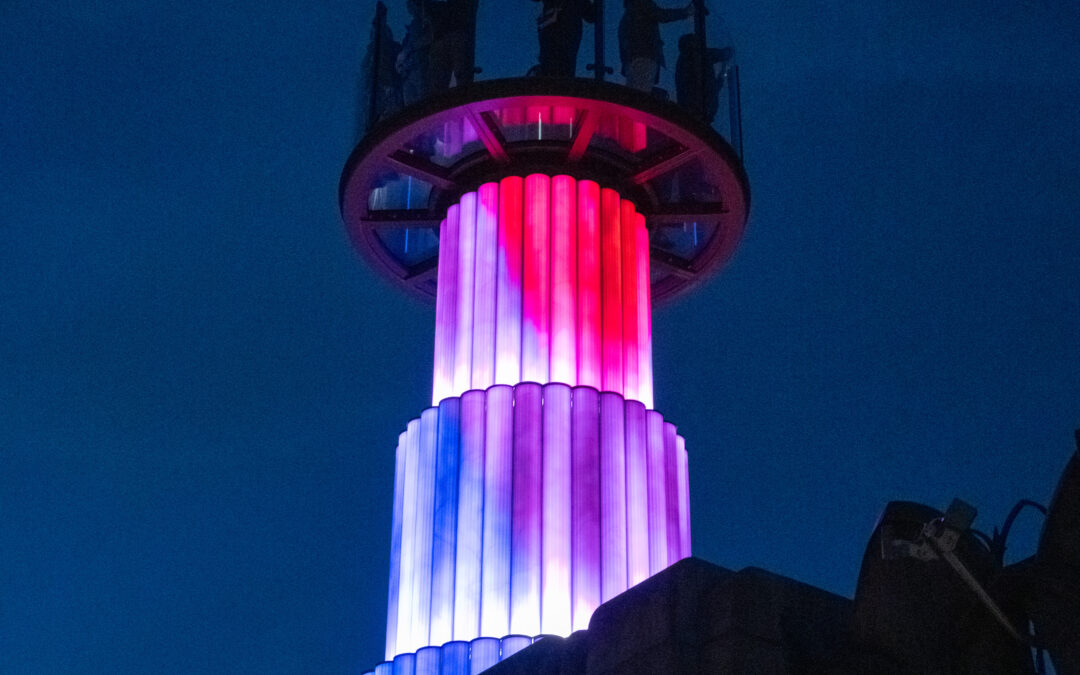
Tishman Speyer Properties and Architect Richard J. DeMarco Complete Skylift At Rockefeller Center’s Top Of The Rock
The One-of-a-Kind Attraction Elevates Visitors Nearly 900 Feet Above New York City New York, NY–Skylift at Top of the Rock, a new attraction atop 30 Rock, elevates visitors nearly 900 feet in the air above street level for a spectacular, entirely unobstructed,...
